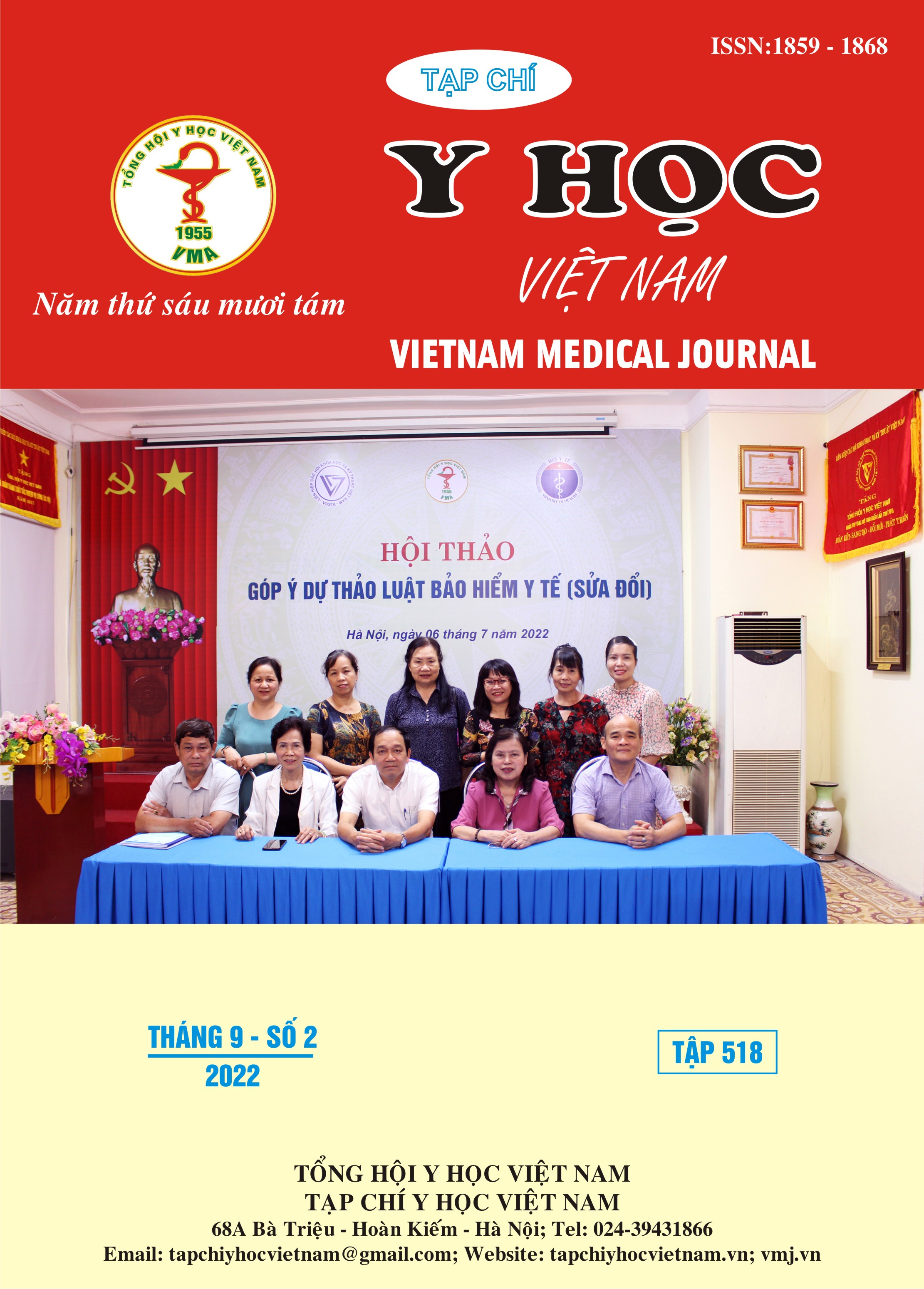PHÂN TÍCH ĐẶC ĐIỂM SỬ DỤNG VANCOMYCIN TRÊN BỆNH NHÂN NẶNG ĐIỀU TRỊ HỒI SỨC TÍCH CỰC TẠI BỆNH VIỆN HỮU NGHỊ VIỆT ĐỨC
Main Article Content
Abstract
Objective: To analyze the characteristics of vancomycin using in adult patients at the Intensive Care Unit 2, Anesthesia & Surgical Intensive Care Center, Viet Duc Hospital. Subjects and methods: A retrospective descriptive study based on data collected from medical records of adult patients hospitalized at the ICU 2 from January to September 2021. Results: Vancomycin is mainly indicated for empiric treatment for common infections in surgical patients, only 18.4% of the samples were isolated from Gram (+). 31% of patients in this study received a relatively high mean loading dose (40 mg/kg). The initial maintenance dose was mainly 1g every 12 hours, 1g every 8 hours and only 2 cases needed 1g every 6 hours. 11.96% of patients reported kidney complications. Conclusion: It is necessary to develop a protocol of the vancomycin using as well as vancomycin therapeutic drug monitoring (TDM) according to the update guidelines in the world to optimize the dose regimen, to ensure the effectiveness and limit the toxicity of this drug.
Article Details
Keywords
Vancomycin, Intensive care unit, Viet Duc Hospital, surgery, analysis of drug using
References
2. Hanberger H., Walther S., et al. (2011), "Increased mortality associated with methicillin-resistant Staphylococcus aureus (MRSA) infection in the intensive care unit: results from the EPIC II study", Int J Antimicrob Agents, 38(4), pp. 331-5.
3. Bauer Larry A (2008), Applied Clinical Pharmacokinetics, The MC Graw Hill Company, 7th edtition, pp. 207-301
4. Katip W., Jaruratanasirikul S., et al. (2016), "The pharmacokinetics of vancomycin during the initial loading dose in patients with septic shock", Infect Drug Resist, 9, pp. 253-260.
5. Kim A. J., Lee J. Y., et al. (2016), "Comparison of the pharmacokinetics of vancomycin in neurosurgical and non-neurosurgical patients", Int J Antimicrob Agents, 48(4), pp. 381-7
6. Xiao Qile et al (2022), "Augmented Renal Clearance in Severe Infections—An Important Consideration in Vancomycin Dosing: A Narrative Review", Frontiers in Pharmacology, pp. 1-1
7. Lodise T. P., Drusano G. L., et al. (2011), "Penetration of vancomycin into epithelial lining fluid in healthy volunteers", Antimicrob Agents Chemother, 55(12), pp. 5507-11.
8. He J., Yang Z. T., et al. (2020), "A higher dose of vancomycin is needed in critically ill patients with augmented renal clearance", Transl Androl Urol, 9(5), pp. 2166-2171.
9. Heffernan A. J., Germano A., et al. (2019), "Vancomycin population pharmacokinetics for adult patients with sepsis or septic shock: are current dosing regimens sufficient?", Eur J Clin Pharmacology, 75(9), pp. 1219-1226.
10. Cruciani M., Gatti G., et al. (1996), "Penetration of vancomycin into human lung tissue", J Antimicrob Chemother, 38(5), pp. 865-9.


